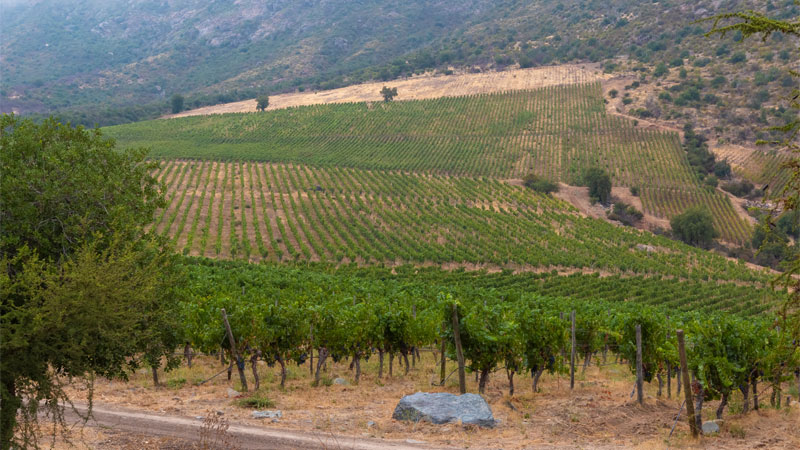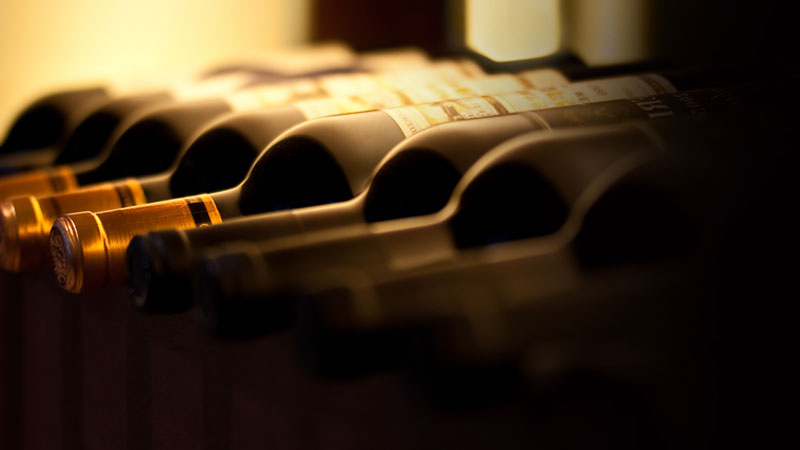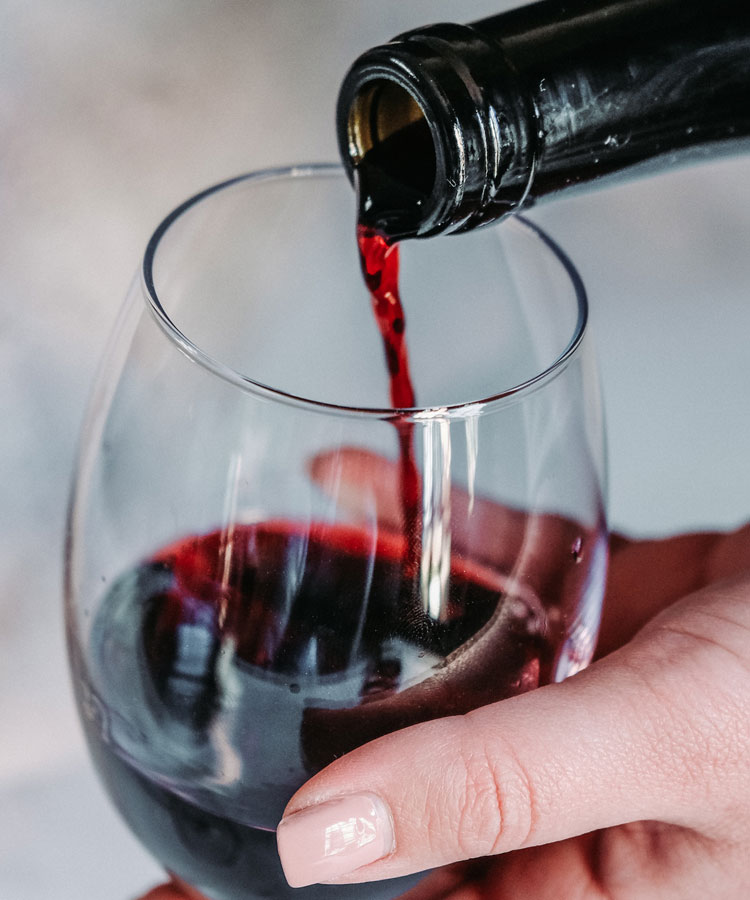
If you’ve not seen the debauched outtakes from Orson Welles’s infamous Paul Masson Wines ads of the late 1970s, here’s your chance to catch up. While there’s not much there there, the mantra “No wine before its time” is a good one. “Some things,” Welles says, “can’t be rushed.” And he’s right. Although most wines are meant to be consumed within a couple years of purchase, a small percentage benefit from years of bottle aging, a process that allows a wine to reveal more complex aromas and flavors with time.
Age manifests differently in every wine. White wines that initially offered up bright stone fruit flavors might develop deeper, dried fruit qualities and — given more time — might even show so-called tertiary notes, such as mushroom, spice notes, hay, and stone. The color of the wine will also mature, as vibrant reds transition to tawny browns, and light whites to deep gold or even light brown, depending on how much oxidation occurs within the bottle.
“Not all wines are necessarily better with age, but a great wine, when aged, is a beautiful thing,” says Andrea Morris, beverage director at New York’s Intersect by Lexus. The distinction, she says, comes down to structure: “acid, tannin, alcohol, sugar, and body — how the wine feels in your mouth.” Wines that balance these qualities are the ones that tend to mature most gracefully.
At the most basic level, acidity and tannins help — and are helped by — time in the bottle. Tannins (polyphenols that give many wines their characteristic astringency) combine and become heavier falling out of solution and resulting in smoother reds and creamier, more viscous whites. “The tannin helps the wine feel substantial even after fruit flavors mellow — and the acidity makes the finish feel fresh,” Morris says. In richer reds, such as Cabernet Sauvignon, aging softens both structural tannins and acid, and gives way to smoother texture, while the initial fruit fades and brings in more earth tones, such as tobacco and leather.
The best-known regions for Cab are California’s Napa Valley and Bordeaux, but the grape is also widely grown in South America and is the most cultivated variety in Chile, representing about one-third of all cultivated grapes. The long, narrow country (more than 2,500 miles long but averaging only 109 miles in width) is celebrated for a mosaic of soil types and climates — shaped by the Pacific Ocean, which runs the length of its western border and creates a cooling wind known as the Humboldt Current — and the Andes Mountains, the world’s longest and most extensive mountain range, which separates Chile from its eastern neighbor, Argentina.

Some wineries are able to hold back wines that they think need bottle time to show their best, but this is a costly proposition, requiring ample cellar space and the financial resources to allow the business to thrive while holding back inventory. The majority of wineries have to move a vintage before the next one can come in, which means that most wines end up on store shelves before they’ve had the time to settle into themselves. This leaves the responsibility of aging — and the necessity of patience — up to us wine lovers.
So how best to go about aging bottles at home? Morris says the ideal temperature for storing wine is 55 degrees Fahrenheit. “A basement or closet that doesn’t get warm is a good spot because it’s also dark. Light can mess with the aging process, so get that wine away from the window,” she says. Even under your bed will work. Lastly, lay the bottles on their sides, whether on a wine rack or not; keeping the wine in contact with the cork ensures that the cork won’t dry out and shrink. (Cork shrinkage may lead to premature oxidation and can cause wine to degrade faster than you want it to.)
The right amount of time to hang onto a bottle before drinking it, Morris says, depends on storage conditions, the vintage, and style of winemaking. But ultimately, she says, it’s a matter of personal taste. “If you like a big bold red with a lot of juicy fruit, just a few years, say, four to six, should do,” Morris says. “If you’re looking for more earth notes and smoother tannins with just a little ripe fruit, then somewhere in the eight- to 15-year range is better. If the goal is dried fruit, mushrooms and leather with a more delicate structure, then hold on to that bottle for 20 or more years” (assuming the wine has a structure that can hold up for that length of time).
Cabernets are often great choices for extended aging because, when young, the wines can be quite tightly wound with aggressive tannins and oak. The Cabernet Sauvignon grape became a much sought-after variety when French winemakers discovered how hearty and disease-resistant the grape is. The cross between the red Cabernet Franc and white Sauvignon Blanc resulted in a great tannic structure that was especially valued in Bordeaux, where winemakers began to blend the variety with other grapes. The noble grape became so ubiquitous, people took to calling it “the great colonizer.”
Today, you’ll find Cabernet Sauvignon in nearly every wine-producing country in the world, from Italy to South Africa to New Zealand. And it’s a good thing there’s so much of it because Cabernet Sauvignon is now the most popular red wine in the United States.

Chile’s primary wine growing areas reveal how diverse Chilean Cabernets can be. Sunny, dry valleys such as Aconcagua, for example, are known for full-bodied wines with soft tannins, while the temperate Cachapoal region boasts alluvial soils with clay and gravel that confer greater minerality. Colchagua Andes, a smaller growing region within the Colchagua Valley at the base of the Andes, can reach daytime temperatures in the upper 90s in summers, but plummet to the 40s at night, resulting in Cabs with higher acidity and lower sugars. Maipo Alto, Chile’s most historic and important wine-growing region with plantings dating back to the 16th century, is home to the country’s largest and most established producers. Described as the “Bordeaux of South America,” that region’s fruity, rich Cabernet is reminiscent of Cabs from Napa.
“What I like about Chilean Cab,” says Andrea Morris, “is that you get ripe dark fruit aromas like a California one, but often with higher, fresher acidity, especially from high-altitude vineyards and those with coastal influence. In those areas, the alcohol is often also more moderate than many New World Cabernets.” Morris notes that higher-end Chilean Cabs are specifically made with cellaring in mind, saying that many of these wines could easily pass for Bordeaux.
Some vintages are better cut out for a longer life in the bottle than others. “A vintage exposed to higher temperatures will result in lower acid and riper fruit, which may be good for earlier drinking but will probably lose freshness before any of the secondary aromas come around,” Morris says.
The style of the winemaker will also certainly play a role in whether a wine is better consumed young or should spend some time on the rack. “Some wineries’ goals are fruity, drink-it-when-you-buy-it styles,” says Morris. Delicious in their own right.
And truth be told, some wine drinkers will just prefer younger wines no matter what. The best way to experiment in any wine endeavor is by pouring a glass — or two. Open bottles of the same Cab at different junctures and see what you experience. And if you don’t have the patience to wait around for years, that’s O.K., too. As we say in our general guide to aging, “All wine, even the most age-worthy, is meant to be drunk, not looked at in a collection.”
This article is sponsored by Wines of Chile. Taste the Unexpected.
This story is a part of VP Pro, our free platform and newsletter for drinks industry professionals, covering wine, beer, liquor, and beyond. Sign up for VP Pro now!
